Keio University is not only famous for its high-quality education, but also for its famous alumni who are active in domestic politics, singing, and on the world stage. Those who enjoy J-POP may know Sho Sakurai, who is a member of Arashi. Former Prime Minister Junichiro Koizumi, Ryutaro Hashimoto, and Inukai Tsuyoshi all graduated from Keio University.
Let’s take a look at the information about this prestigious university from the aspects of its history, founder, world ranking, acceptance rate, and admission information. In addition, if you are also looking for information about universities and other study programs in Japan, check out some of our articles below:
Read Also:
The Acceptance Rate of Sophia University: All Important Things You Need to Know
10 Most Popular International Universities in Tokyo
Introduction to Keio University
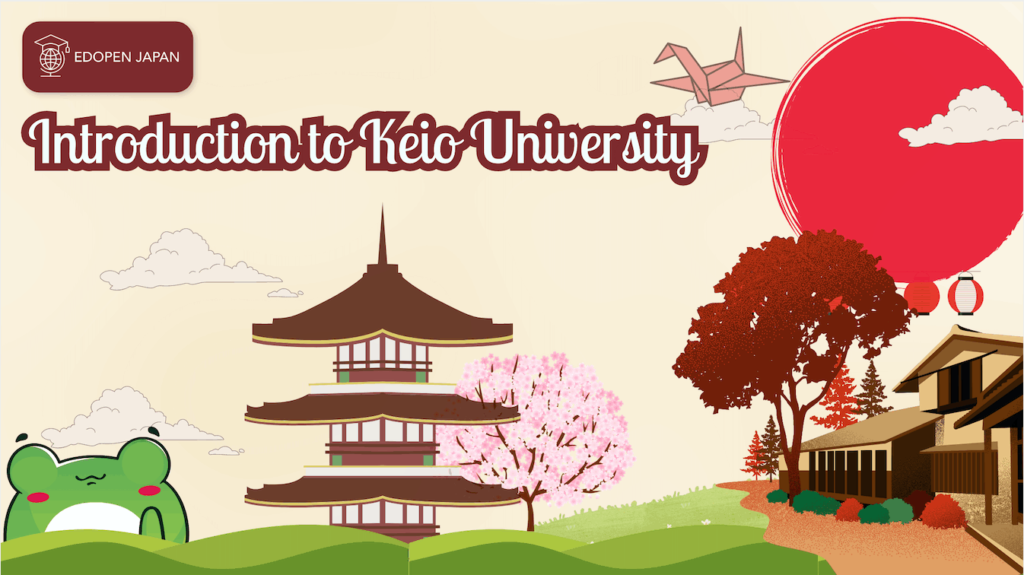
Keio University, Japanese name 慶應義塾大学 (Keiō Gijuku Daigaku), is a private institution (Mita Campus) located about a 10 minute walk from Tokyo Tower. This university is part of a larger organization called Keio Gijuku, which also includes elementary and secondary schools in the system.
Basic Information
- 6 main campuses in the Kanto region: Mita Campus, Hiyoshi Campus, Yagami Campus, Shinanomachi Campus, Shonan Fujisawa Campus, and Shiba-Kyoritsu Campus)
- Over 33,400 students, including undergraduate and graduate students
- 10 undergraduate faculties as follows:
| Faculty | Department |
| Faculty of Letters | Humanities and Social Science |
| Faculty of Economics | Economics |
| Faculty of Law | Law Political Science |
| Faculty of Business and Commerce | Business and Commerce |
| School of Medicine | Medicine |
| Faculty of Science and Technology | Mechanical Engineering Electronics and Electrical Engineering Applied Chemistry Applied Physics and Physico-Informatics Industrial and Systems Engineering System Design Engineering Information and Computer Science |
| Faculty of Policy Management | Policy Management |
| Faculty of Environment and Information Studies | Environment and Information Studies |
| Faculty of Nursing and Medical Care | Nursing |
| Faculty of Pharmacy | Pharmacy Pharmaceutical Sciences |
- 14 graduate schools, as follows:
(1) Graduate School of Letters
(2) Graduate School of Economics
(3) Graduate School of Law
(4) Graduate School of Human Relations
(5) Graduate School of Business and Commerce
(6) Graduate School of Medicine
(7) Graduate School of Science and Technology
(8) Graduate School of Media and Governance
(9) Graduate School of Health Management
(10) Graduate School of Pharmaceutical Sciences
(11) Graduate School of Business Administration (KBS)
(12) Graduate School of System Design and Management (SDM)
(13) Graduate School of Media Design (KMD)
(14) Law School
Founder of Keio University: 福澤 諭吉 Yukichi Fukuzawa
Check the ten thousand yen bill in your wallet! The portrait on the Japanese ten thousand yen bill is none other than the founder of Keio University. As an educator, Yukichi Fukuzawa is not only the founder of Keio, but also a Japanese author and publisher.
Yukichi Fukuzawa (1835-1901) and Okuma Shigenobu, the founder of Waseda University, were both born in Kyushu and made great contributions to modern Japan.
Traced back to 1858, Fukuzawa established the school to promote Western education. In the early stages, the institution taught Dutch. A few years later, in 1863, Fukuzawa’s school switched its focus to English studies. The institution changed its name to “Keio Gijuku” in 1868, which came from “Keio era” and “Gijuku” as a translation of Private School.
The legacy of Yukichi Fukuzawa cannot be summarized in a few paragraphs. If you are interested in the history of Keio University or Yukichi Fukuzawa, I am sure you will find many fascinating facts on Keio’s official website.
Keio Logos
The symbol of a school or company most often implies the spirit, belief, and mission that it holds all the time. Keio University has three logos, which are the Pen Mark, the Keio Emblem, and the Sanshokuki (Keio’s school flag). The “Pen Mark” is the most common mark that can be found everywhere on the official website.
Moreover, it is said that Keio University started using the mark in 1900. Tracing back to 1885, students were inspired by a phrase in the textbook saying “the pen is mightier than the sword”. Since then, students have worn the pen emblem on their caps. After the emblem gained more approval from other students and faculties of Keio, the “Pen Mark” is still used today.
World Ranking
As a university with a legendary history and proud achievements, Keio University’s performance in the world rankings is correspondingly outstanding. According to the QS Global World Ranking 2022, Keio University is ranked 201. In addition, according to Times Higher Education (2021), Keio University is ranked as the 12th best university in Japan.
Acceptance Rate and Admissions Information: All-English Programs
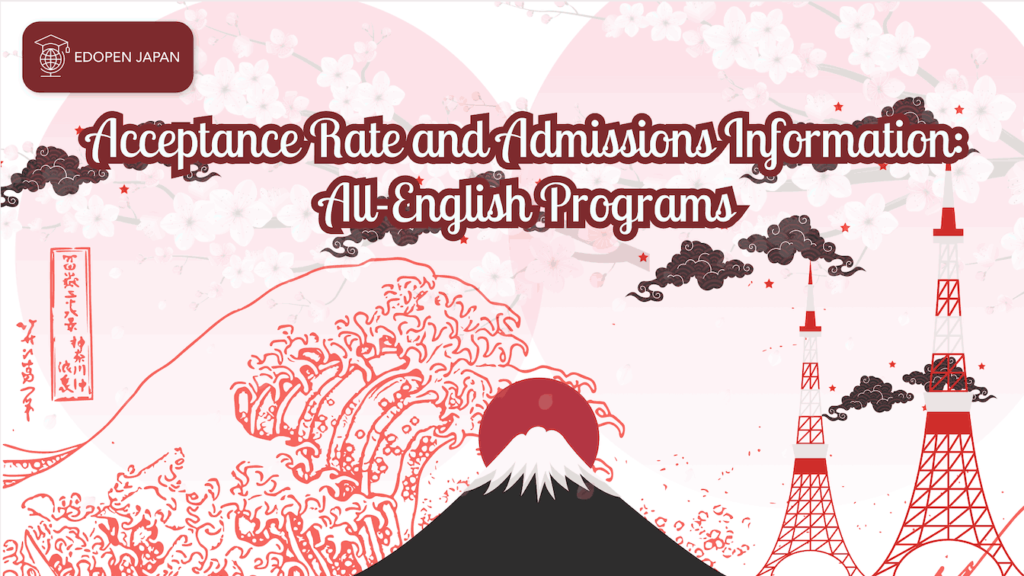
The programs offered at Keio University are mainly taught in Japanese. It is necessary to be fluent in Japanese when applying for these programs. If you wish to take courses in full English, Keio offers two programs, which are presented below.
The Global Information and Governance Academic (GIGA) Program
Launched in 2011, the GIGA program is established under both the Faculty of Policy Management and the Faculty of Environment and Information Studies. The campus is located at Shonan Fujisawa Campus (SFC), a beautiful campus in Kanagawa. Focusing on education that integrates technology, science, design, and governance, GIGA promises students an environment with knowledge and skills that meet the needs of this era of rapid progress.
Admission Information
Recently, Keio made an adjustment to the application period, which Keio named the process AO (Self-Recommended Admissions) Screening. There were four sets of application periods for the same admission, named Summer AO, Fall AO, Winter AO, and Spring AO. The change was announced to combine Summer AO and Fall AO into one application period.
| Enrollment period | Release of Application Guidebook | Application period | Announcement of results | |
| Summer / Fall AO 2021 | April or September 2021 | Mid-May 2021 | Early September 2021 | Late November or early December 2021 |
| Winter AO 2021 | September 2022 or April 2023 | November 2021 | December 2021 to mid-February 2022 | Around late March 2022 |
| Spring AO 2022 | September 2022 or April 2023 | Mid-January 2022 | Early June 2022 | Mid-July 2022 |
- Admission quota: approximately 150 each for the Faculty of Policy Management and the Faculty of Environment and Information Studies
- Students may not apply to both faculties in the same year
For more detailed admission information (requirements, application materials, tuition fees), please see the Winter AO 2021 (Global) [Admissions for the GIGA Program] Application Guide for those seeking admission in September 2022 or April 2023:
Acceptance Rate
Below are statistics derived from the Application Guidebook for those seeking admission in September 2022 or April 2023, with the acceptance rate calculated by the author of this article.
| Faculty of Policy Management | Applicants | Acceptance | Acceptance Rate(approximately) |
| 2019 entry | 92 | 51 | 55.4% |
| 2020 entry | 117 | 53 | 45.2% |
| 2021 entry | 165 | 43 | 26% |
| Faculty of Environment and Information Studies | |||
| 2019 entry | 115 | 71 | 61.7% |
| 2020 entry | 155 | 76 | 49% |
| 2021 entry | 205 | 38 | 18.5% |
The number of applicants to both faculties has shown remarkable growth year after year, especially between the 2020 entry and the 2021 entry, with about 50 more applicants. Since there is not much difference in the number of acceptances between the 2019 entry and the 2020 entry, the acceptance rate seems to be decreasing.
Further, it is even more obvious in the 2021 entry, the acceptance rate comes to the lowest, at the same time with the most applicants within the three years.
Programme in Economics for Alliances, Research and Leadership (PEARL)
Established in 2016, the program belongs to the Faculty of Economics. The beautiful name of this program PEARL also carries the image of pearl that everyone wants. The program is designed to provide international students with courses specialized in economics.
Admission Information
Blow is the latest application schedule for September 2022 enrollment. The table refers to Japan Standard Time (JST) in this application timeline.
| PEARL | Application Period | Announcement of Results |
| first | 10:00 a.m. on October 22, 2021 – 3:00 p.m. on December 3, 2021 | 10:00 a.m. on January 28, 2022 |
| second | 10:00 a.m. on December 8, 2021 – 3:00 p.m. on January 31, 2022 | 10:00 a.m. on February 25, 2022 |
| third | 10:00 a.m. on February 22, 2022 – 3:00 p.m. on April 5, 2022 | 10:00 a.m. on May 27, 2022 |
- Admission is offered in three application periods.
- Approximately 100 students will be admitted in total.
- Applicants who are not accepted in one application period may reapply in a subsequent period.
For detailed admission information (requirements, application materials, tuition fees), please see Admission Procedures for the PEARL Program:
Acceptance Rate
Below are the statistics derived from the Application Guidebook for September 2022 Entry, with the acceptance rate calculated by the author of this article.
| PEARL | Applicants | Acceptance | Acceptance Rate(approximately) |
| 2019 entry – first period | 245 | 101 | 41.2% |
| 2019 entry – second period | 188 | 58 | 30.8% |
| 2019 entry – third period | 127 | 23 | 18.1% |
| 2019 entry total | 560 | 182 | 32.5% |
| 2020 entry – first period | 219 | 96 | 43.8% |
| 2020 entry – second period | 186 | 63 | 33.8% |
| 2020 entry – third period | 100 | 32 | 32% |
| 2020 entry total | 505 | 191 | 37.8% |
| 2021 entry – first period | 256 | 99 | 38.6% |
| 2021 entry – second period | 200 | 53 | 26.5% |
| 2021 entry – third period | 119 | 22 | 18.4% |
| 2021 entry total | 575 | 174 | 30.2% |
In general, the acceptance rate does not have a significant difference within the class of 2019 to 2021. There are about five to six hundred applicants per year, and about thirty percent of them are accepted. Something worth noting is that within the three application period, the number of being accepted goes lower and lower. So it would always be better for you to apply for the first period!
Summary
If you are still wondering which college to apply to, I suggest you better check and write down the admission information of all the colleges you are considering in your notebook. Important information such as the application period, the deadline for sending documents, the required documents, and so on. In many universities in Japan, they consider these application rules above all. Sometimes they do not accept incomplete applications and late applications.
Finally, we hope that the above information about Keio University’s background, world ranking, and acceptance rate will help you better understand the institution.

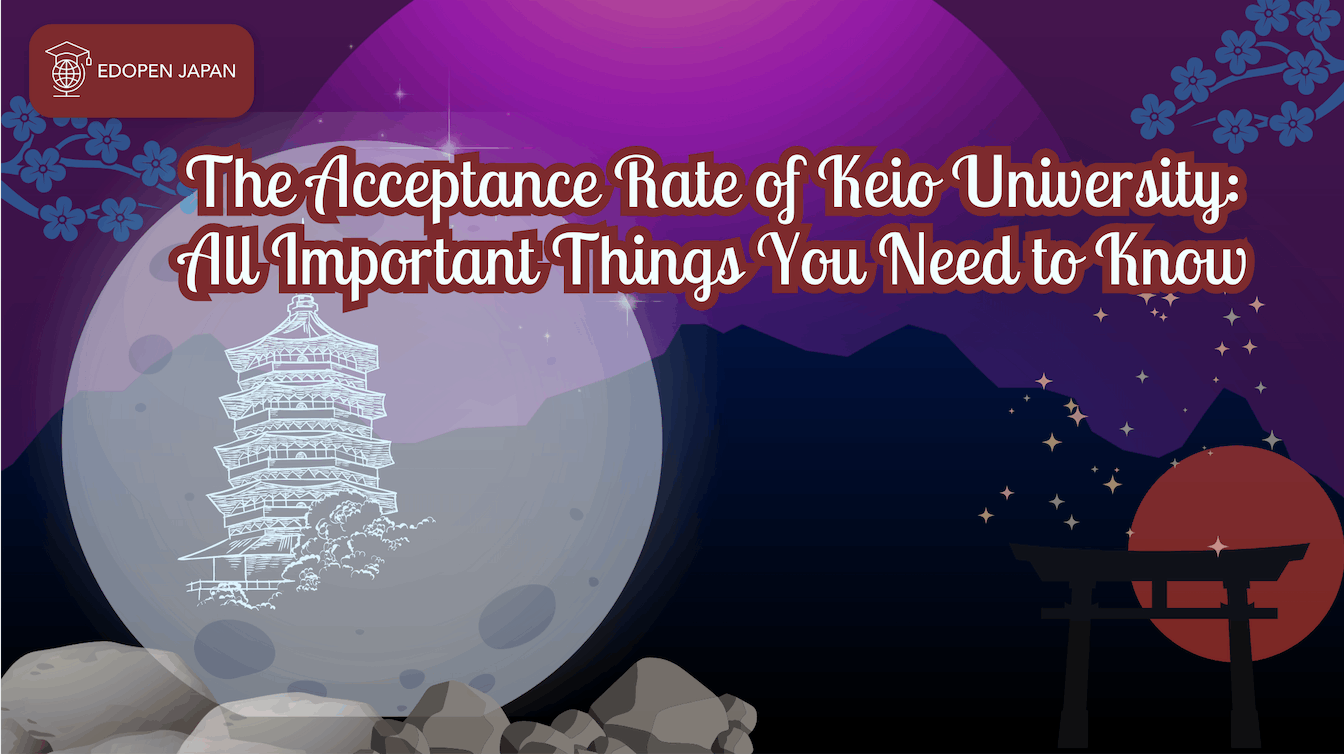





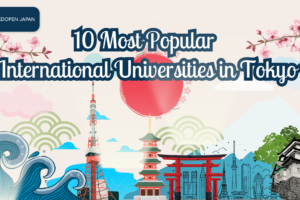




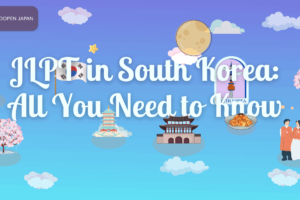

Leave a Reply